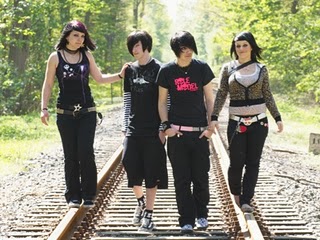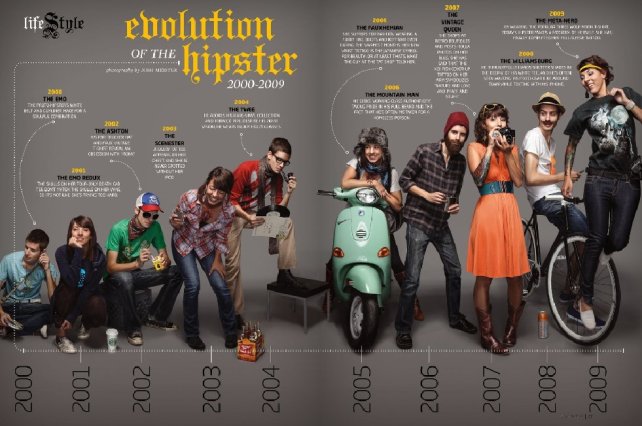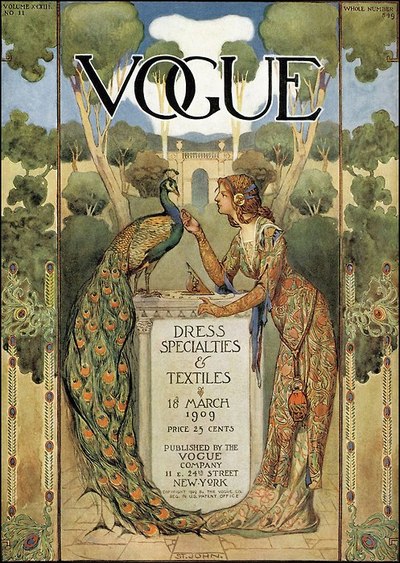The Social Impact of Fashion Photography, By Daniel
The way in which we dress can depend on the physiological effects imposed on us by what we see everyday in newspapers, magazines, billboards and television. But generally fashion photography impacts a lot more then any of the others. It generally creates conflicting ideas about whats socially acceptable to look like physically and what cloths to wear. For some people keeping up to date with whats fashionable is very important. It means a lot for those people to look good and to have people notice them. Although not everyone makes it their goal to keep up with what’s in fashion. Fashion can be a way in which we as individuals make nonverbal judgements of a person, by simply looking at their clothing or accessories. Fashion in society can be split up into different social groups or stereotypes. For example we all know the Emo’s, scene kids, punks, skaters, hippies, hipsters and the fashionisttas’s. The list goes on..
Emo: is short for ’emotional’. There dress sense generally consists of black eyeliner, black corsests, black boots, black hair dye and black pants with a lot of chains or metal. Emo’s will tend to listen to emotional hardcore or emocore styles of music.
Hipsters: are a social group that are into politics, art, indie rock and love witty banter. Their dress sense consists of vintage and op shop clothing, tight jeans, old-school sneakers and occasionally thick rimmed glasses. Both hipster men and women sport the messy shag hair cuts or side swept hair styles.
Fashionista: is someone that is devoted to fashion clothing, particularly unique or high fashion. They’ll wear name brands and expensive designer cloths. A true fashionista’s does not follow a trend.
Read more at Suite101: Teen Stereotypes: Emo, Goth, Prep? Identifying Teenage Social Groups | Suite101.com http://www.suite101.com/content/teen-stereotypes-a44095#ixzz1NblFWqb9, http://www.urbandictionary.com/define.php?term=hipster
Fashion blog, with street fashion photography: http://www.thesartorialist.blogspot.com/
Fashion photography has impacted on certain aspects of society, throughout history. In the early 1900’s, fashion photography was becoming more and more popular, with the creation of French fashion magazine, La mode practique and the American magazine Vogue. Vogue and many other fashion magazines have since lead the way for fashion. Vogue gave the women of the time fashionable hats, garments,shoes and accessories to wear. In the 1900’s it was established that the more fashionable cloths a women wore, the higher she was in society. Hats were another big concern in the day. Depending on the type of hat a women wore, would again depend on their social status. For men It was primarily a 3 peice suit during the day and if it was a formal occasions it would be a tuxedo. Top hats were also a necessity, for both day and special occasions. Below are some examples of what could be found in a fashion magazine in the 1900’s.

La mode practique magazine page: http://www.demodecouture.com/plates/
Baron Adolph, Vogues first photographer never hired models, instead he photographed high society women and celebrities in their designer cloths.
Over the years it’s been extremely important for fashion photographers to keep up to date with youth culture and changing trends in society. It’s also important for the photographer to be imaginative, to think outside the box and create pictures that will interest and draw the reader in. But also keep the style and classiness of the model. Using different perspectives can give an image a unfamiliar and interesting look, compared to the usual shots taken at standing height. The photographers knowledge of the basic elements and principles, will also impact heavily on how ascetically appealing the image will be.
Fashion photography blog: http://www.keralafashions.com/php/showContent.php?linkid=86
With ever changing society and trends, fashion photographers needed to know what was going on. In the ‘Dior Addict’ fragrance add below, the models image is distorted, her pose is erotic and she’s covered in sweat. The photographer observed the underlying glamorisation of the drug culture in youth society and used this to his or her advantage. The photographer promoted the product very well but also promoted the elusive and exciting area of society. However after a few months of pressure from anti drug abuse groups, Dior got rid of the images that glamorised illegal drug use.
The Mx newspaper you get on the trains have article’s dedicated to fashion and what fashionable clothing people are wearing. In this case just about everyone can see whats hot and whats not, for free. Its in a way reaching out to people that cant afford to buy the fashion magazines, so instead they can have a quick glimpse in the Mx.
Fashion the 50’s to the 2000’s:
Interesting Links:
View of fashion photography: http://anthromodeologist.wordpress.com/2010/05/31/critical-view-the-impact-of-fashion-photography/
Soiology Semiotics: http://www.fashion-era.com/sociology_semiotics.htm
Dior add: http://www.nstperfume.com/2008/05/20/dior-addict-by-christian-dior-perfume-review/





